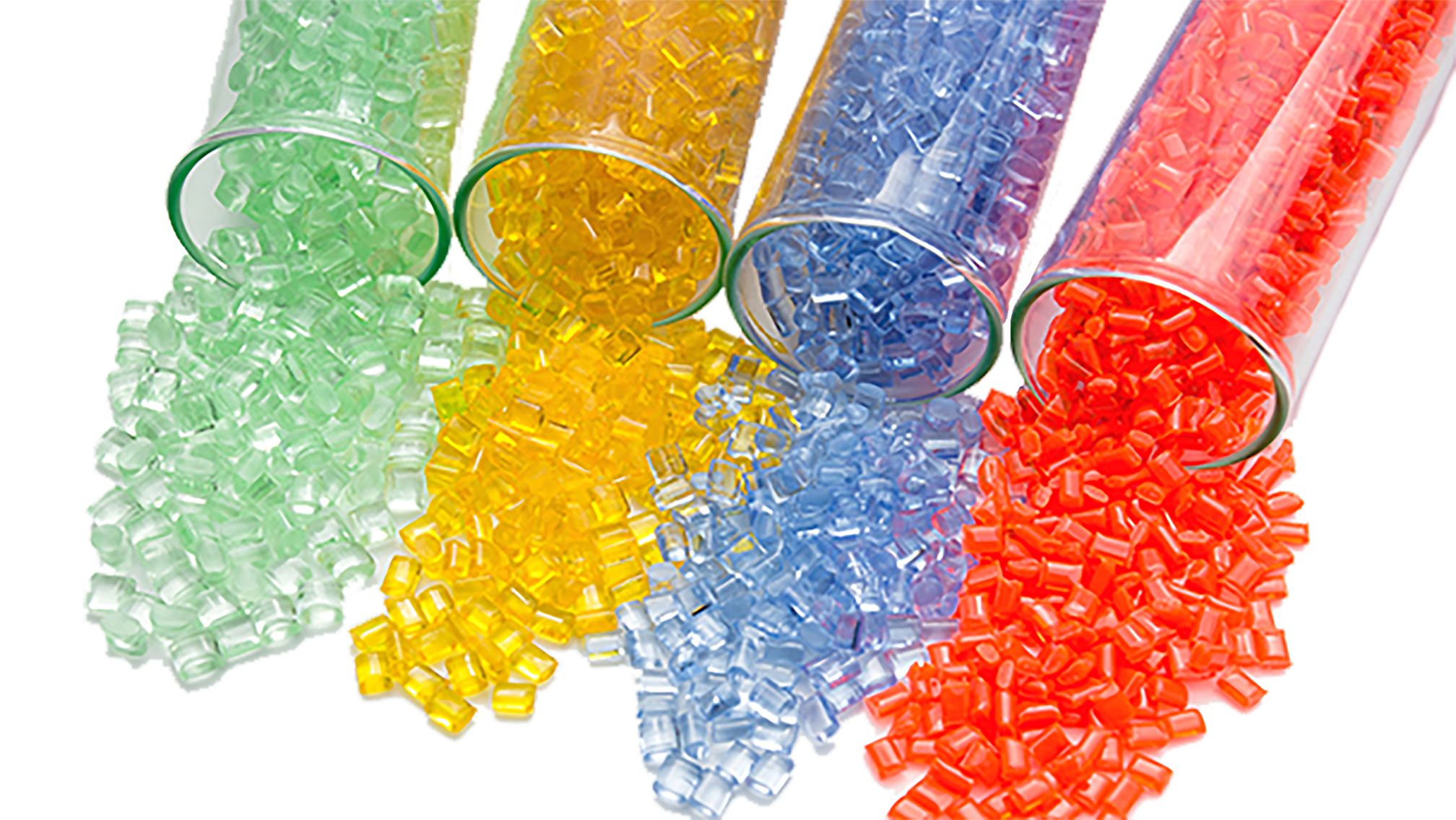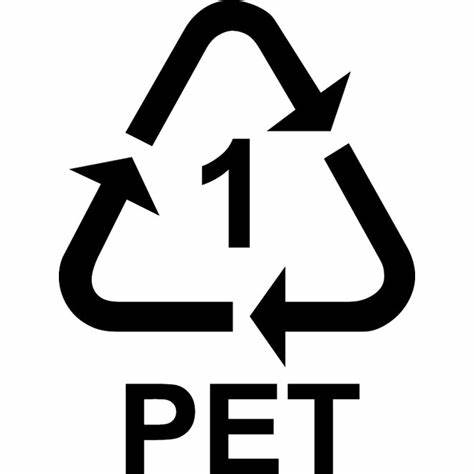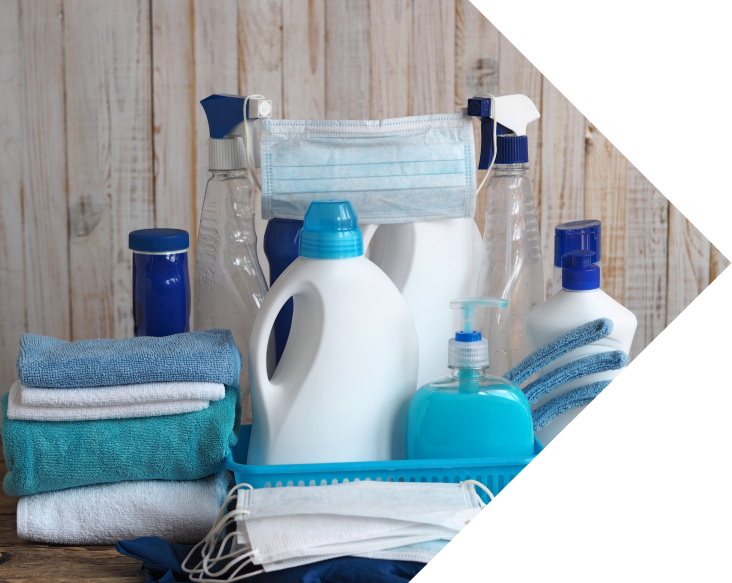
Resin Material Definitions & Comparison Chart
Resin Material Definitions
Polyethylene Terephthalate (PET)
PET has excellent clarity and toughness. When PET is oriented during the stretch-blow process it greatly improves the material’s clarity, shatter resistance, and gas barrier properties. It has relatively good chemical resistance to alcohols, hydrocarbons, weak acids, and aldehydes. The most common bottling application for PET is carbonated beverages and water but is also used in personal care, food, industrial/household, and OTC markets.

High Density Polyethylene (HDPE)
HDPE is a strong, multipurpose resin that many associate with 1-gallon milk containers which use this material in its natural state. Color also can be added for shelf appeal. HDPE has limited chain branching which makes it rigid and less permeable to chemicals. HDPE acts as an excellent moisture barrier but has poor gas barrier properties. This material can be used for a variety of products and has excellent chemical resistance to most acids and bases along with organic compounds and certain solvents. HDPE has a density of 0.940-0.965 grams/cc. and is suitable for personal care, food, and industrial/household chemicals.

Polyvinyl Chloride (PVC)
PVC has high-impact strength and excellent clarity. This material has good chemical resistance and is commonly used for household/industrial chemicals and the automotive market. A major use of PVC resin is piping for the housing market.

Low Density Polyethylene (LDPE)
Known as a tough and flexible resin, LDPE is predominately used in film applications, but is a good choice for bottles needing good “squeezability”. The natural color of LDPE ranges from relatively transparent to opaque depending on wall thickness. It has more branching than HDPE which results in a less crystalline product and lower density of 0.92 grams/cc. This lower density will impact top load performance when compared to an HDPE bottle. LDPE has excellent resistance to acids and bases. LDPE bottles are commonly used in personal care, foot, and OTC applications.

Polypropylene (PP)
PP is a strong and versatile material that can be molded in a variety of ways: injection molding, extrusion blow molding, stretch blow molding, and thermoforming. It has excellent chemical and stress crack resistance but can be attacked by strong oxidizing agents. This low-density material, 0.90 grams/cc, is translucent, hot-fillable, and autoclavable. The clarity of the material can be improved with biaxial orientation during the stretch blow process. PP is known for its low moisture vapor transmission. Excellent fatigue resistance makes PP the material of choice for closures with integral hinges. Drop impact is negatively impacted by cold temperatures. PP is commonly used in the pharmaceutical, OTC, personal care, and food markets.

Polystyrene (PS)
General purpose PS is clear, hard, and brittle with excellent dimensional stability and good chemical resistance to aqueous solutions. PS is often combined with rubber to improve the impact properties which is called Medium Impact Polystyrene (MIPS). This is used for packaging purposes but causes the material to lose its clarity. Petroleum jelly jars commonly use PS.

Polylactic Acid (PLA)
PLA is a biodegradable resin (in a commercial composting center) made from renewable resources such as corn starch or sugarcane. Most commonly used for food service clam shells and film overwraps for CD’s and DVD’s, the material is slowly entering the bottle market. The material is well suited for the injection stretch blow process commonly used with PET. However, high moisture vapor transmission rates and poor thermal resistance make the resin unsuitable for numerous applications. Work continues in the marketplace to improve the characteristics of PLA.
Resin Comparison Chart
| Polyethylene Terephthalate (PET) | High Density Polyethylene (HDPE) | Polyvinyl Chloride (PVC) | Low Density Polyethylene (LDPE) | Polypropylene (PP) | Polystyrene (PS) | |
| Clarity | Clear | Hazy Translucent | Clear | Translucent | Translucent | Clear |
| Moisture Barrier (MTVR) | Good | Excellent | Good | Very Good | Excellent | Poor |
| Oxygen Barrier | Good | Poor | Good | Poor | Poor | Poor |
| Distortion Temperature | 155°F | 160°F | 150°F | 110°F | 200°F | 170°F |
| Rigidity | High | Moderate | High | Low | Moderate | High |
| Stress Crack Resistance | Excellent | Fair | Excellent | Good | Excellent | Fair |
| Cold Resistance | Good | Excellent | Fair | Excellent | Poor | Poor |
| Impact Resistance | Good | Excellent | Good | Excellent | Fair | Poor |
| Alcohol Resistance | Good | Good | Excellent | Good | Good | Fair |
| Alkalis Resistance | Poor | Good | Excellent | Good | Good | Fair |
| Solvent Resistance | Good | Poor | Good | Poor | Poor | Poor |
| Oil Resistance | Fair | Good | Good | Good | Good | Poor |
| Acid Resistance | Fair | Good | Good | Good | Good | Fair |
